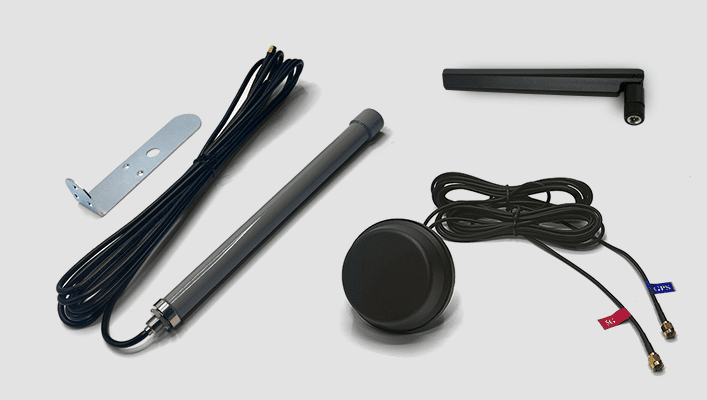More and more processes and devices can be followed in near real-time or real-time online. We advise organizations on a daily basis how they can optimize processes using IoT hardware, IoT connectivity and data processing. A suitable antenna is crucial to unlock the data.
Yet the antenna often receives less attention than is necessary. In this article, Cas van der Zwaag & Marco van den Bos of our strategic partner Delmation explain the challenges and solutions.
Often not enough GSM range
With a smartphone, we all find it very logical that there is no range in some places, this is sometimes forgotten with IoT applications.
Cas van der Zwaag: “Sensors, routers and gateways are very often placed in environments where there is no, moderate or poor coverage. Think of factory halls, cellars, patch cabinets or in rural areas in the Netherlands. If your smartphone has poor range in this location, you can assume that the range of a sensor, router or gateway is even worse. Sensors, gateways or routers are usually equipped with a plug-in antenna. A stick on antenna can be sufficient for an outdoor location with a lot of range, but indoors this is often not the case”.
Choosing a good antenna
There are many different types of antennas and to choose a good antenna, a number of considerations have to be made.
Cas van der Zwaag: “Of course the range is the most important, but you also have to look at the environment where the antenna is placed. For example, there are special antennas that are ‘vandalism proof’. These are placed in environments where many people can approach the antenna and there is a high risk of vandalism. In addition, it is mainly choices about reach. With a 4×4 MIMO, optimal use can be made of 5G. If the signal has to come from far away, then focused beaming is a solution and a high dBi is important. In addition, the following applies to antennas: size does matter, a large antenna is better”.
Plug in antennas
Plug in antennas are attached directly to the sensor, router or gateway. These often have a kink construction so that the angle and placement offers more options. Plug in antennas provide a small gain and should always be attached. Usually these antennas are supplied as standard by the manufacturer.
Magnetic base antennas
A magnetic base antenna is a small rod antenna that can be attached to a magnetic surface by means of a magnet. These antennas are very easy to use and provide a relatively large gain compared to plug in antennas.
Puck antennas
Puck antennas are characterized by their small size and high vandal resistance. These antennas are ideal for mounting on outdoor cabinets. The greatest amplification is achieved by mounting the antenna at the top of the cabinet. In addition, the puck antennas are IP67 certified and therefore suitable for outdoor applications.
Point antennas
A directional antenna or Point antenna is an antenna that radiates or receives more power in a specific direction. Because the antenna focuses on one direction, there is less interference from other directions, resulting in better performance.
Rod antennas
These antennas typically provide the highest possible gain and range. However, the placement, mounting and size must be taken into account. Rod antennas are resistant to the worst weather conditions.
Integrated antennas
Integrated antennas offer the possibility to place routers and gateways in the antenna itself. Placing the router or gateway close to the antenna minimizes losses and eliminates the need to worry about placement.
Multi antenna
A multi antenna makes it possible to use a single antenna for GSM, GPS and WiFi. These antennas also come with multiple cables. The advantage of multi antennas is that only one antenna needs to be installed, which saves space.
SISO / MIMO
Single input, single output (SISO) is an antenna system where the transmitter has a single antenna. SISO is commonly used in radio, satellite and GSM systems.
Multiple Input, Multiple Output (MIMO) antennas transmit data as different signals, through multiple antennas, using a single radio signal. This form of beaming, which uses multiple antennas, improves the strength and signal quality.
For more information about antennas, you can contact us via telephone number 085-0443500 or by mail to info@thingsdata.com.
Need reliable IoT SIM cards? Request our test kit for 3 free SIMs with 100 MB data for 3 months. Experience seamless IoT connectivity today.
Looking for a reliable IoT partner? Download our brochure for instant access to valuable insights about our services and IoT solutions.
